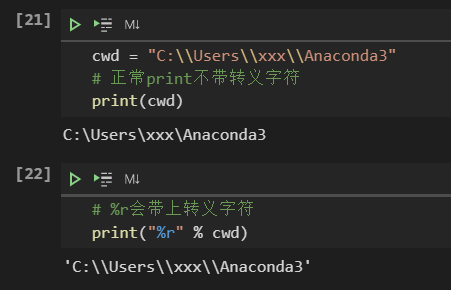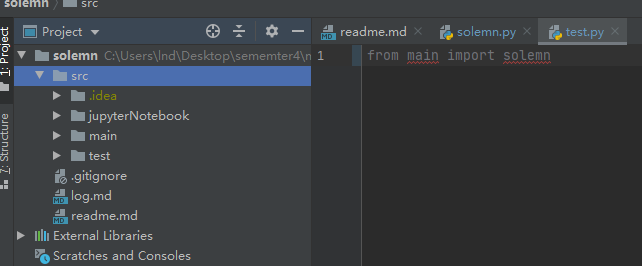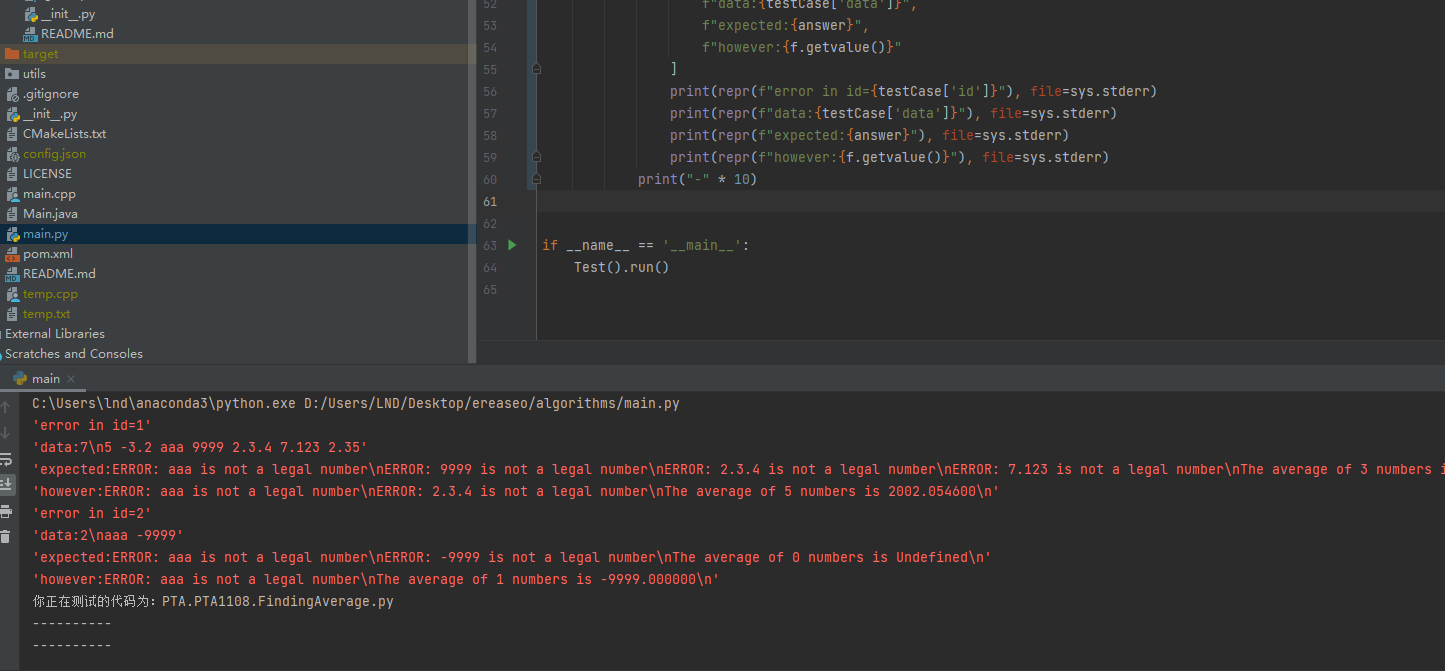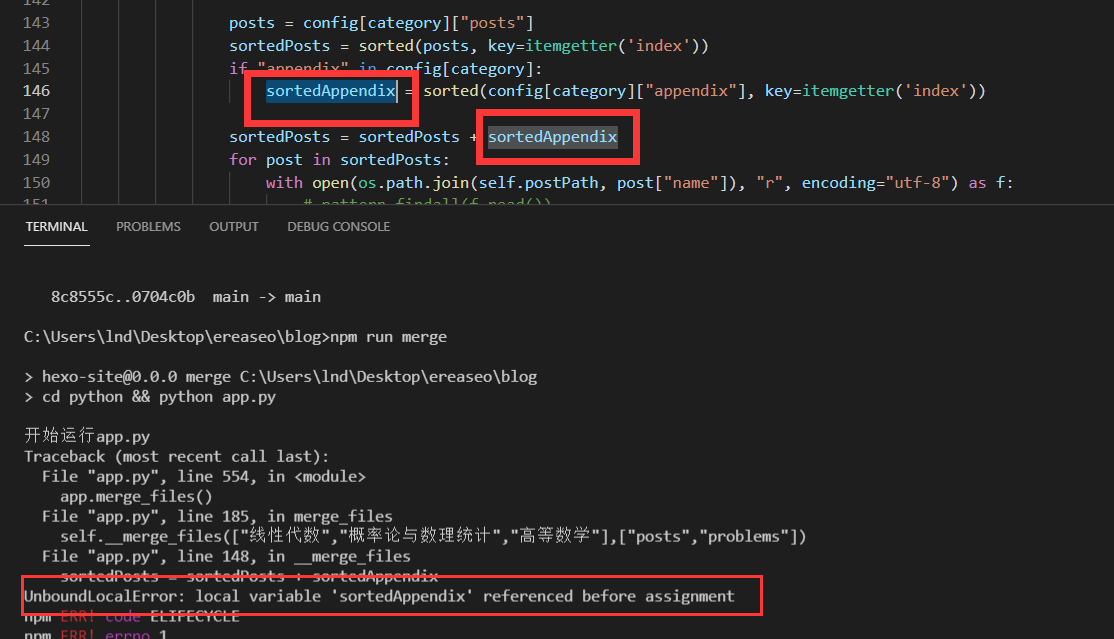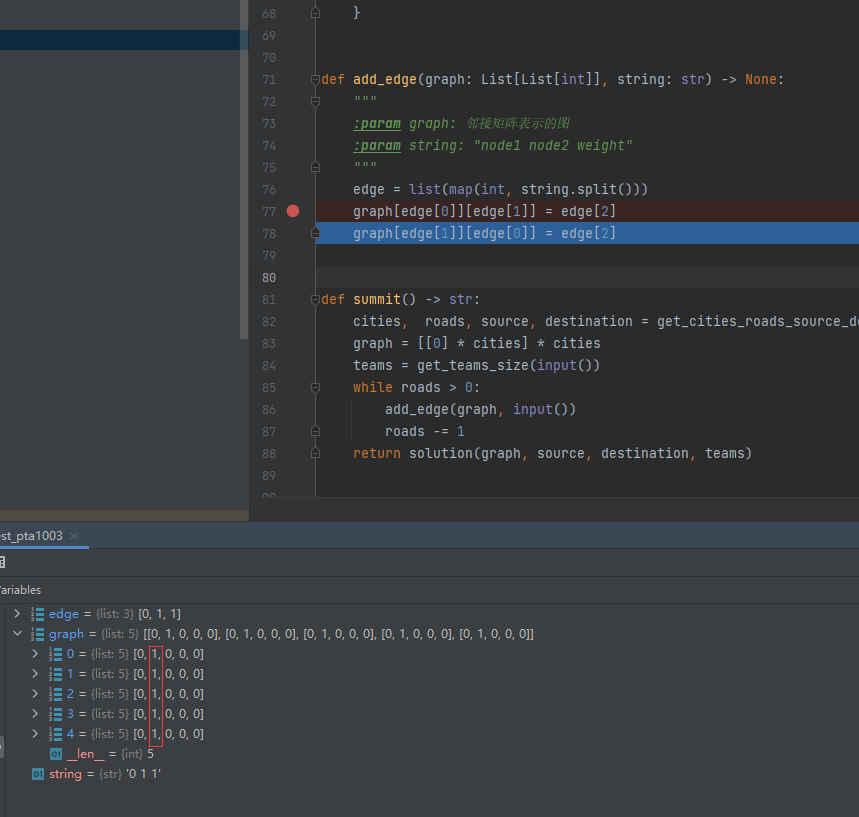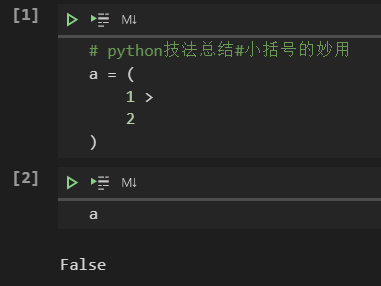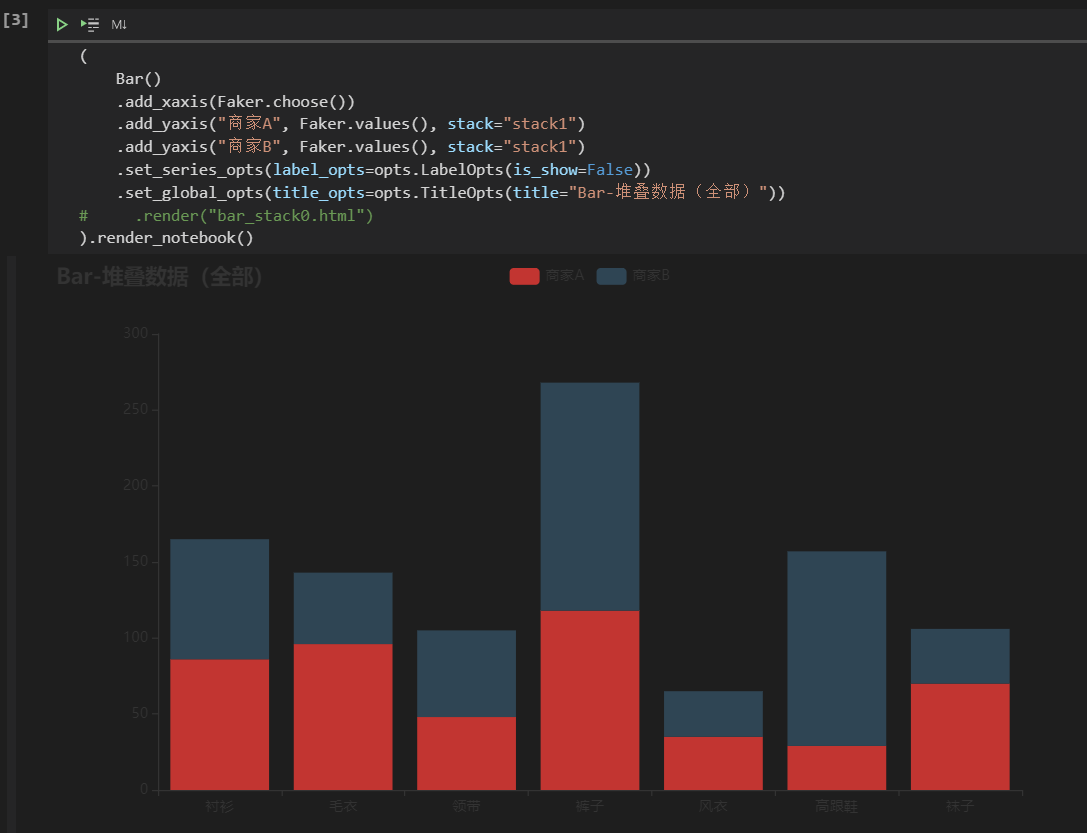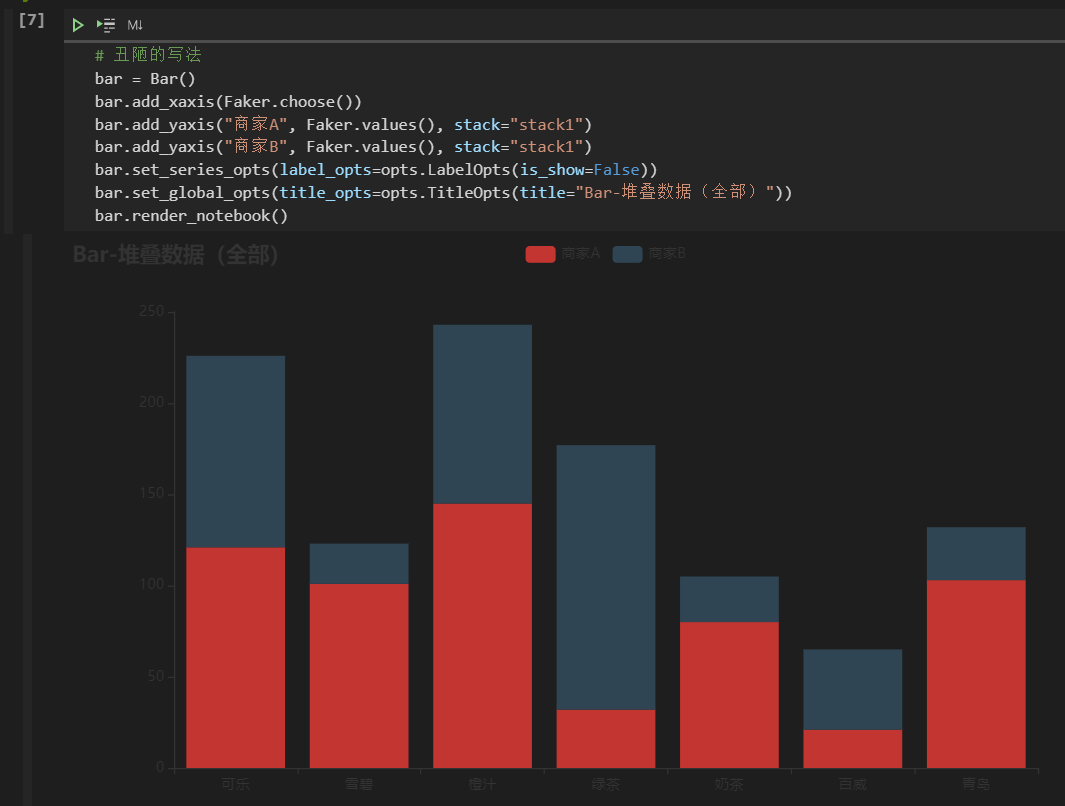总结一些python基础技法和常用库
前言
本文的内容按照下面的思路组织
python作为一门现代语言,有着非常好的包管理工具与完美的生态
语言基础
了解python中如何组织变量的是非常重要的,是明确参数传递,变量作用域,lambda表达式的关键
多线程是python中非常重要的一环,尤其是在爬虫的时候
面对对象编程
面对对象是非常优秀的设计模式,python中涉及到面对对象的小细节
生态
为了防止重复造轮子,一门现代的语言基本上都有包管理工具,如java的maven,gradle,js的npm等
IDE
变量
变量与引用
标记赋值
标记赋值:参考文献
一个有趣的例子
为什么values=[0, [...], 2]
1 | >>> values = [0, 1, 2] |
参数传递
感觉cpp中这样写是对的,如何理解python中的这种现象,java中也是一样的
原因在于不存在二阶指针!!!
无法修改地址所指的方法
78行创建了一个新的变量root
图片详情
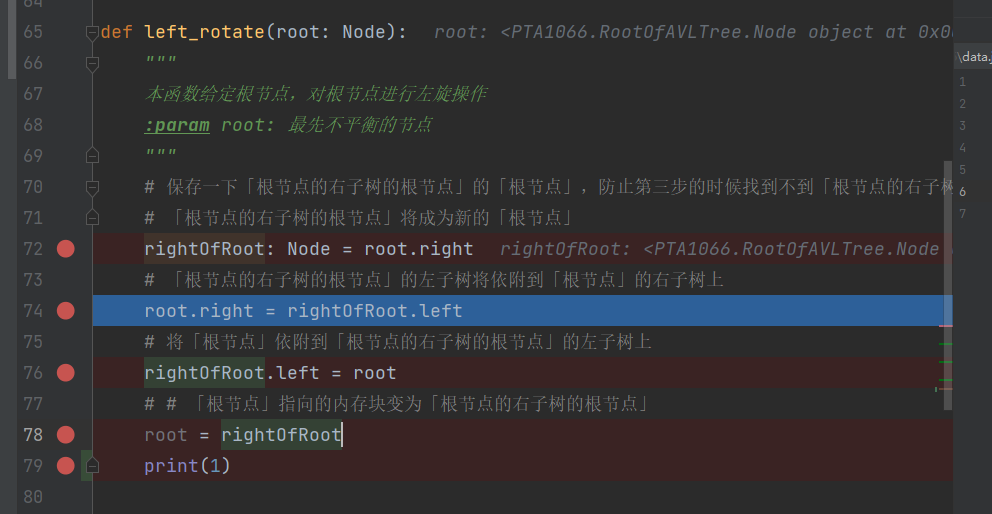
值传递和参数传递
类和对象
父类的初始化
方法一: 调用未绑定的父类__init__方法
1 | class A(object): |
方法二:调用super函数
1 | class A(object): |
super方法的参数
带不带参数理论上是一样的
参考文献
设计模式
单例模式
关键字与内置包
装饰器
set.discard
该方法不同于 remove() 方法,因为 remove() 方法在移除一个不存在的元素时会发生错误,而 discard() 方法不会。
例子
1 |
|
assert
sorted
字母表排序
int
实验
1
2
3
4
5
6
7
8
9
10
11
12
13
14
15
16
17
18
19
20
21
22
23
24
25
26
27
28
29
int(1.2)
1
int(1.6)
1
int(1.25)
1
int(1.05)
1
int(3.05)
3
int("1.2")
Traceback (most recent call last):
File "<stdin>", line 1, in <module>
ValueError: invalid literal for int() with base 10: '1.2'
type(1.2)
<class 'float'>
>>> type("1.2")
<class 'str'>
>>> int(1.2)
1
>>> int("1")
1
>>> float("1.2")
1.2
>>> int("0.00")
Traceback (most recent call last):
File "<stdin>", line 1, in <module>
ValueError: invalid literal for int() with base 10: '0.00'
>>>
int的总结
- 当用int对浮点数进行转型的时候,会截断(truncate)小数部分
- 如果对小数字符串进行int转型会报错
数据结构
序列(sequence)
查看一个对象是不是序列
1 | isinstance([], collections.Sequence) |
list
list是一个动态数组
cpython中的实现
1 | typedef struct { |
insert
insert的时候需要移动数组的指针,平均之间复杂度为O(n)
1 | static int |
set
集合的交并补
str
@property
filter
选出满足条件的对象
函数原型
1 | filter(function, iterable) |
例子
基本应用
从列表中选出满足特定条件的元素
1 | # 新建一个list |
综合应用举例
连续爬取图片的时候,下载图片合并成pdf之后,删除上一次爬虫生成的图片
删掉”resources/2020/comments/*.jpg”,”resources/2020/comments/*.jpg”
1 | import os |
%s的妙用
有的时候需要原字符串(即带转义字符\的)
保存为文件的时候
logging
常用日志设置
1 | # 得到一个logger |
datetime,time
pickle-序列化与反序列化
导入
1 | with open(os.path.join(DATAPATH,"full_music_data.pkl"),"rb") as f: |
导出
TODO
unitest
非常好用的自动化测试框架
json
json字段和python中字段的对应关系
dict
dict多属性排序
1 | a = {1:[1,2,3],2:[1,1,3],3:[1,2,3],4:[1,2,1]} |
并且得到最小的id
1 | from operator import itemgetter |
得到key的index
1 | keys=i.keys() |
多线程
线程锁
lock和rlock的区别
lock可以在一个线程上锁,在另一个线程解锁
rlock只能在上锁的线程解锁,并且可重入
参考文献
sleep
只会阻塞该线程
re
开启.匹配换行符
添加参数re.DOTALL
1 | pattern = re.compile(r".*?---(.*)---",re.DOTALL) |
关于re.DOTALL和re.M混合使用导致前者失效
$\mho$(TODO)
替换的时候使用匹配到的字符串
bug
当要匹配的内容中存在\U的内容时,会出现问题
比如
1 | "C:\Users\%username%\AppData\Roaming\Code\User" |
会报错
1 | re.error: bad escape \U at position 374 (line 27, column 7) |
解决方法
TODO
问号的用处
非贪婪匹配
前瞻后顾
前瞻: exp1(?=exp2) 查找exp2前面的exp1
后顾: (?<=exp2)exp1 查找exp2后面的exp1
负前瞻: exp1(?!exp2) 查找后面不是exp2的exp1
负后顾: (?<!exp2)exp1 查找前面不是exp2的exp1
举个负后顾的例子
在做笔记的时候,把所有的「奈奎斯特」都少打了「奈」变成了「奎斯特」,这时候需要将所有的「奎斯特」替换成「奈奎斯特」该怎么做呢?
| 被替换处填入 | 替换处填入 |
|---|---|
| (?<!奈)奎斯特 | 奈奎斯特 |
如在vscode中
图片详情

修改批改符号
将\checkmark改为\color{green}{\checkmark}
(?<!\\color\{green\}\{)\\checkmark
\color{green}{\checkmark}
不捕获分组
举个例子
图片详情

图片详情

找到第一个不为某个值的位置在字符串中
search 和 match的区别
pattern = re.compile(r"^[-]?[1]?\d{1,3}(.\d{0,2})?$")
$\color{red}{\text{Q}}$: 像上面那样写还有区别吗
限定符
| 符号 | 含义 |
|---|---|
| ? | 出现0次或者多次 |
使用前面匹配到的结果
$1 -> \1
包管理
pip
查看pip版本
pip show pip
annaconda
pymongo
mongodb是非常常用的非关系型数据库之一,python中常用pymongo对mongdb数据库进行操作
数据库连接
数据库库连接的url和官方的mongodb compass可视化软件一致
1 | dbs = pymongo.MongoClient("mongodb://user:pass@ip/database") |
创建db和集合
docker容器数据的备份
flask
flask的第一份源码
flask的源码解读
flask中的蓝图
pycharm
快捷键
| 快捷键 | 作用 |
|---|---|
| shift + F6 | 改变量名 |
run unitest 而不是 run main
断点异常
debug的时候明明没有断点的地方确断点了,或者断点没有阻塞运行:重启pycharm
Details
关闭和开启兼容性检查
Details
性能分析工具profile
Q & A
得到当前路径
os.getcwd()
进制转换
进制转换

只格式化部分字符串
Traceback
一次读多个string
代码详情
1 | '\n'.join(iter(input, sentinel)) |
好像不行
图片详情
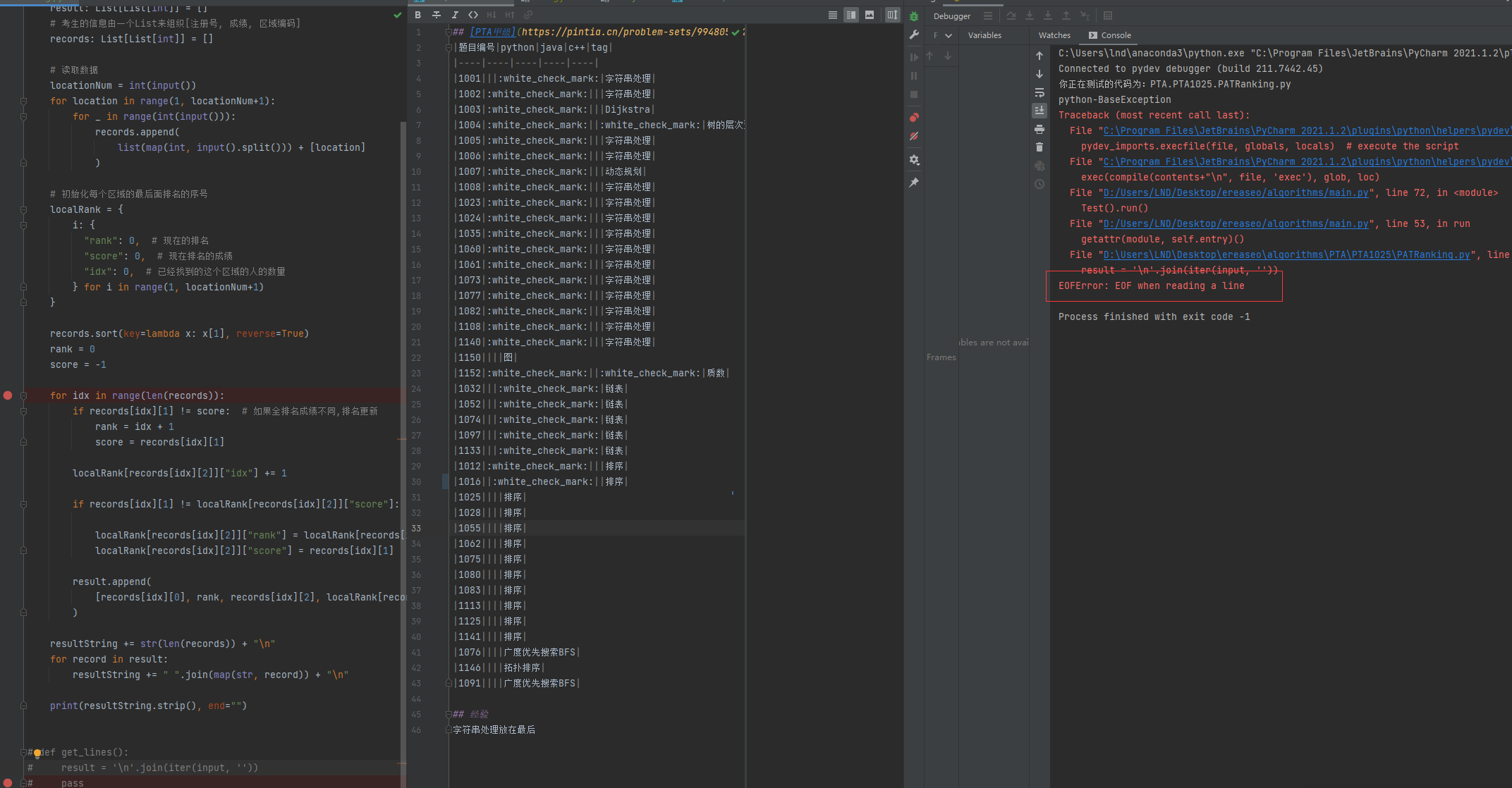
自定义Exception
内部typing
append 和 +的区别
重定向输入输出
重定向输入
将输入重定向为字符串
1 | from io import StringIO |
重定向输出
1 | from io import StringIO |
zen of python
为什么要加密
一行有趣的lambda代码
nb_children = lambda node: sum(nb_children(child) for child in children(node)) + 1
用lambda函数进行递归,求一颗树中节点的个数
一份合理的工程结构
这种工程结构在pythcharm中是能够在同级目录下导入模块
但下面这个不行
字符串的split函数
如果不带参数的话,默认会把非空字符当作sep
统一改变list的数据类型
map(int, list)可以将字符串统一改成int类型
sort默认是升序
交替穿插两个等长的list
法1
1 | sum(zip(l1, l2), ()) |
法2
1 | list1 = ['f', 'o', 'o'] |
reduce和sum的区别
字符串的split函数
如果不带参数的话,默认会把非空字符当作sep
统一改变list的数据类型
map(int, list)可以将字符串统一改成int类型
sort默认是升序
交替穿插两个等长的list
法1
1 | sum(zip(l1, l2), ()) |
法2
1 | list1 = ['f', 'o', 'o'] |
reduce和sum的区别
misc
python包去重
Details
1
2
3
4
5
6
7
8
9
10
11
12
13
14
15
16
17
18
19
20
21
22
23
24
25
26
27
28
29
30
31
32
33
34
35
36
37
38
39
40
41
42
string = """#include <iostream>
#include <cstdio>
#include <string>
#include <vector>
#include <deque>
#include <list>
#include <map>
#include <iostream>
#include <cstdio>
#include <string>
#include <vector>
#include <deque>
#include <list>
#include <map>
#include <iostream>
#include <cstdio>
#include <string>
#include <vector>
#include <deque>
#include <list>
#include <iostream>
#include <cstdio>
#include <cstring>
#include <string>
#include <vector>
#include <deque>
#include <list>
#include <algorithm>
#include <string.h>
#include <stack>
#include <stdio.h>
#include <iostream>
#include <cstdio>
#include <string>
#include <vector>
#include <deque>
#include <cstring>
#include <list>"""
package = string.split("\n")
print("\n".join(list(set(package))))
通过内存地址访问变量
sys.stderr 比 sys.stdin输出的优先级更高?
奇异的bug
UnboundLocalError: local variable 'sortedAppendix' referenced before assignment
只改了一个元素,一列都变了?
[[0] * cities] * cities 会创建索引相同的五个list
raw string
小括号的妙用
简单应用
如果直接运行
1 | 1 > |
会报错
但如果这样子写
1 | a = ( |
python解释器就能正确解释
综合应用举例
使用pyecharts画图的时候,灵活运用小括号,可以是代码简洁,增强阅读性
取组合排列
1 | list(combinations([1,2,3],2)) |
stringIO
通过字符串获取方法
getattr(object, name[, default])
通过字符串导包
exec表达式
python 每n个字符串为一组
在list中找出第一个不为0的下表
python中的等于赋值
打印错误日志
打包自己的库并安装
list是线程安全的
线程池
python读取截切板中的图片为二进制
Python可以通过第三方库来读取剪贴板中的内容,但是需要注意的是,不同的操作系统可能需要使用不同的库。对于图片,我们可以使用Pillow库来处理图片,然后将其转换为二进制。
如果你在Windows系统中,可以使用clipboard和Pillow库来读取剪贴板中的图片并转换为二进制。首先,你需要安装这些库,可以使用pip来安装:
1 | pip install clipboard Pillow |
然后,你可以使用以下代码来读取剪贴板中的图片并转换为二进制:
1 | import io |
如果你在Mac或Linux系统中,可以使用xclip和Pillow库来读取剪贴板中的图片并转换为二进制。首先,你需要安装这些库,可以使用pip和apt来安装:
1 | pip install Pillow |
然后,你可以使用以下代码来读取剪贴板中的图片并转换为二进制:
1 | import io |
注意:这些代码可能不会在所有环境中都能正常工作,因为它们依赖于特定的操作系统功能和第三方库。如果你遇到问题,可能需要根据你的具体环境进行调整。
ORM 框架:SQLAlchemy
选择最大值,并且附带其他条件
代码详情
1 | from sqlalchemy import desc |
python文件
pyi
Python 的存根文件,用于代码检查时的类型提示。
常用的 IDE 都会有类型检查提示功能,比如在 PyCharm 中,当我们给一个函数传入一个错误的类型时会给出对应的提示,这其实不是 IDE 的特殊开发的功能,它只是集成了PEP484的规定,利用了已经预先生成好的 pyi文件。
